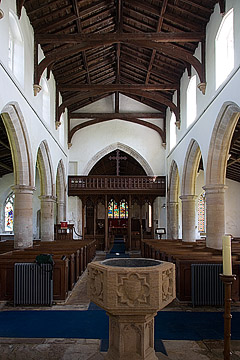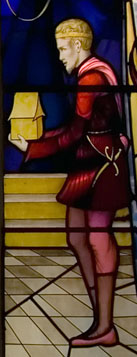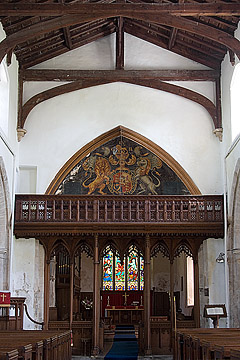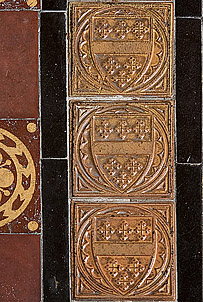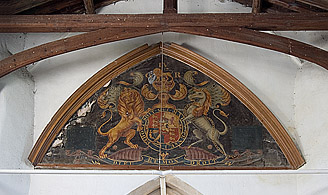The Isle of Ely, in its farthest north parts, nearly touches the sea: north of Tydd St Giles, the Nene has only a few more swift miles to flow before it broadens into the muddy waters of the Wash. The band that extends east and west on either side of this northern tip of the county has a rather different character to the rest of the region.
This is the Silt Fen, a narrow band of silt deposited by the great fen rivers some time before the Bronze Age. Unlike the salt marshes along the coast to the north, and the much more watery fenland to the south, this strip was quite well-inhabited (it is also known as the Townland).
This, and the enviable position it occupied for trade, meant that it contains some of the most magnificent churches in the area. In Norfolk to the east one can see Terrington St Clement, the Walpoles, Walsoken and West Walton; in Lincolnshire to the west are Long Sutton, Gedney and Holbeach. Even in Cambridgeshire (usually the poor cousin to its two northern neighbours as far as churches are concerned) we have grandeur represented at Leverington, and Tydd, and Wisbech.
St James sits in the midst of these giants like a skiff surrounded by galleons; for this is not one of the huge Townland churches. Neither is it especially interesting, though it's pleasant enough. The exterior is somewhat marred by the dingy stucco, but I quite liked it nevertheless. There's a nice south porch with a big entrance arch, and the Decorated tower is interesting: small, but with decorative buttresses. Those on the east face are diagonals, and those on the west face cross-buttresses, descending in steep steps via a series of fake gables.
The tower and the nave both date from the turn of the 14th century: the clerestory and chancel were added a little later, in Perpendicur fashion. Pevsner speculates that the bases of the nave piers might be Norman, though I must confess that I didn't pay enough attention to them to notice.
We had passed St James a couple of years ago, and found it locked with no information about keyholders. This time, we were lucky enough to find people doing some jobs in the church, so we were able to look around. The architecture of the interior is mostly so simple as to elude description. The nave has four bays, supporting a plain clerestory and a plain roof. At first, I thought that there was a string course above the arcades, but it turned out to be just a water-pipe for the heating system. Up at the west end there is a Perpendicular font with quite rich carving: the bowl and stem are both hexagonal, with deeply cut quatrefoils containing shields.
Moving east, things get a bit more interesting. The eastern window of the north aisle is very beautiful, with lovely curving tracery. It contains glass from 1931, dedicated to the memory of William Boor of Wisbech. It depicts the Gifts of the Magi, surrounded by cherubs with very slick 1930s hairdos.
Nearby, there is a very elaborate 19th century rood screen, complete with rood loft, supported on engaged shafts along the front of the screen which are themselves decorated with little spirelets. It's a big structure, and fills the chancel arch almost entirely. The old rood stair also survives, along with a battlemented corner bracket which would once have both supported and given access to the old loft. Next to the bottom door is an old piscina set into the corner.
[Mark adds: hanging above the tower arch is a large tympanum with the royal arms of George IV (innacurate provincial ones too, because the arms show the escutcheon of Hanover surmounted by an electoral bonnet when in fact Hanover had become a kingdom in 1814 and should have a crown instead. Maybe they just painted IV over III to save money when the monarch changed...) I've digitally restored it to its rightful place in an image below.]
The barrelled chancel roof seems to have been restored at the same time as the screen was inserted, for it too is decorated in high Victorian style, with stencilling of red and green. The Victorians also provided some good floor tiles, following the pattern of a few medieval survivals which are dotted here and there.
St James is usually kept locked.

